
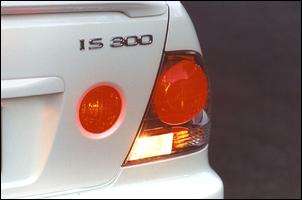
While I don't think that any accusations of brand bias in our new car tests can be justified, it's certainly valid to say that in general we like Lexus products. We've driven all of the grey market import Soarers - from naturally aspirated to twin turbo to single turbo to V8 - and loved them. Our review of the four-wheel drive RX300 was so positive that Lexus Canada uses a quote from it in their new car brochure.
This writer even has two Lexus LS400s in his household, with one his beloved personal car.
Although, it must be admitted, our review "Lexus IS200 Limited Edition" of the IS200 was more lukewarm - if only it had the bigger and far more modern 3-litre six-cylinder under the bonnet, we said.
Well, here is that very car: the IS300.
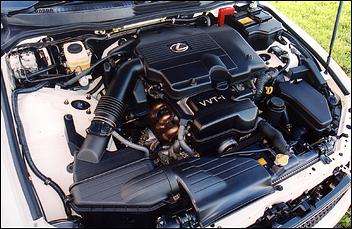
If any vehicle in the Australian Lexus line-up could wear an 'M' badge, Lexus surely believe this to be it. Boasting the 2JZ-GE in-line six with 157kW at 5800 rpm and 288Nm at 3800, this engine comes from a family that includes one of the best six cylinder engines in the world - the VVTi sequential twin turbo used in the Supra. The IS300's version is naturally aspirated, but it still uses variable inlet camshaft timing (able to alter timing by a staggering 60 degrees!) and has a very high 10.5:1 compression ratio - yet can run on normal unleaded. Electronic throttle control, California Low Emission Vehicle (LEV) status, a variable length intake manifold and sequential fuel injection round out a sophisticated and delightfully smooth mill.
Backing the engine is the advanced A650E 5-speed auto. Used previously in V8-engined LS400, this transmission is easily strong enough to cope with all that the six-cylinder engine can throw at it. Able to be optionally controlled by steering wheel mounted 'up' and 'down' pushbuttons, it is claimed by Lexus to give a "combination of top-class acceleration feel and great shift quality". The trans even uses specially developed fluid that is temperature regulated by a coolant/fluid heat exchanger.
But perhaps we'll stop right here.
Let's step back from the engineering babble and look at the reality.
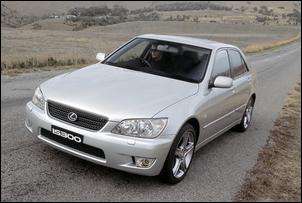
Despite being a small car, the IS300 weighs 1505kg - and these days, 157kW is no big deal to cart around that much mass. In fact, the IS300's performance is only just better than the $30,000-odd 3-litre manual V6 Camry. So to describe the IS300 as a sports sedan - as the company does throughout its press release - is simply wrong.
That is, unless you're comfortable with the notion that a sports sedan has performance only a little better than one of the cheapest family cars in your overall line-up....
But what about the handling, the on-road dynamics? Again, on paper the IS300 has everything you'll ever need - from Electronic Stability Control to double wishbones front and rear, from 17 x 7 alloys, to 215/45 Z-rated Bridgestone Potenza RE040 tyres.
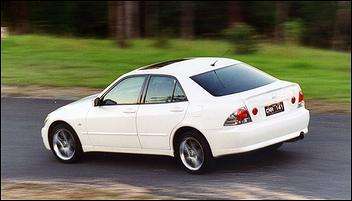
But again the reality simply doesn't live up to the engineering. On the road the IS300 feels unwieldy; despite having an apparently identical steering spec to the IS200, the steering is far more vague around centre than we remember from that previous car. In fact, it's possible to drive in a straight line rapidly wriggling the steering wheel back and forth perhaps a quarter of a turn. The car barely deviates... Perhaps the new engine has a different mass, or perhaps there has been an unannounced change in the steering spec, but the IS300 simply doesn't steer with eager precision.
And the tyres also have a surprising lack of sheer grip. The engine develops 80 per cent of its maximum torque at only 1400 rpm, but the way in which the rear so rapidly lets go under power you could be forgiven for guessing the available torque as 30 or 40 per cent higher than it is. With dry-road wheelspin this early it feels like a six second 0-100 car... not mid-eights. Of course, both the traction and stability control systems are there hard at work, but they seem more set up for a luxury cruiser than a sporty small car. And you can't switch them off - press the button and it just makes the system activate a bit later. But it still cuts in.
The front-end doesn't have a huge amount of grip, either. In fact it's not hard to have the car plough understeering, stability control frantically beeping.
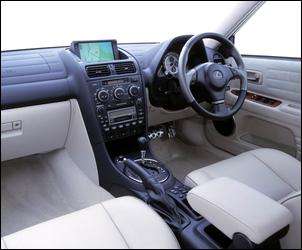
Making the whole shooting match harder to put together is the auto trans. Again, despite its placement in what is meant to be a sports sedan, it behaves far more like it's back in the LS400. Except it's even slower at making changes than in that luxury monster. Left in power mode it picks up lower gears beautifully: there will never be an occasion where you climb a hill and wait and wait for it to downchange. And, conversely, it also doesn't hunt between gears.
But the trans falls down in this application when you want some power to exit a corner: put your foot down quickly and it's caught out, not knowing quite what to do. Of course, that's what the steering wheel gear selection buttons are for - knock the trans lever across to the right and they become activated. But surely the trans should at least be as good as those found in other cars, where even in fully auto mode they have a good idea of what the driver wants?
In one regard the Lexus reminds us of the Mazda MX5 - not a lot of grip, but responsive to inputs. But, unfortunately for the IS300, the Mazda succeeds in this approach because its steering is direct and fluid, its chassis feedback wonderful, and its engine throttle-responsive. In comparison, the IS300 is being felt through thick oven mitts. Sure, if you're using the manual gearbox selection mode, if you've worked out that the required steering lock is greater than you'd first think, if you've switched off what you can of the traction control, and if you're prepared for the tyre slipperiness - then you're onto a good cornering thing.
I imagine, especially if you're a really good driver.
But on the road the IS300 is no Peugeot 307 - nor even for that matter an Astra SRi.
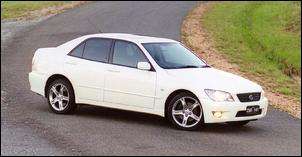
Ah, but what about the build quality? What about the equipment level? What about the cabin spaciousness? Oooops! Don't mention the last one - a Corolla feels roomier...
But look, the IS300 is by no means a bad car.
Don't regard it as a sports sedan.
Don't expect the stability electronics and the steering and the trans to be spec'd to help you flick the car around a winding mountain road.
Don't expect the IS300 to trounce ubiquitous Commodores and Falcons and Magnas away from traffic lights. Especially, don't expect the IS300 to dust off anything like a V8 Commodore or Magna VR-X...
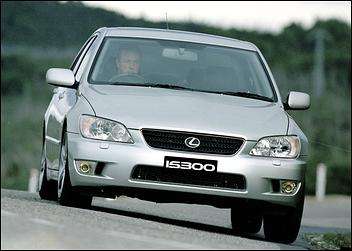
Instead, consider the IS300 to be a compact and luxurious car with adequate power. It is beautifully built, has a great ride - especially considering the very low profile tyres - and has one of the best sound systems in the business. In fact, let's dwell on the equipment in more detail: there's a lot less ambiguity to our appreciation of those bits and pieces.
The $22,470 dollar premium of the IS300 over the IS200 can be sheeted home to far more than the engine swap: the IS300 is simply loaded with equipment. From its six airbags, sunroof, HID discharge lights (very good, although aimed a bit low), self-dimming electrochromatic mirrors and small areas of woodtrim, the IS300 covers nearly every base. Add the optional DVD-based navigation, note the electric seats and drilled alloy pedals and about the only deficiencies you'll find are the lack of seat memories and no trip computer. Incidentally, the nav system is far faster than the older CD-based systems.
Like all Lexus models that we have driven, the cabin equipment works well - the climate control never blows hot or cold blasts, even on start-up. The 6-CD in-dash stacker sound system - altered over the first IS200 by the adoption of 25mm tweeters instead of 20mm units and accompanied by an increase in system amplifier power - is as exceptional as ever, with crystal clear imaging and a superb frequency range. In fact, if you want to hear just how good a sound is possible from front door-mount splits, just turn the fader button... The seats are fine, although room in any seating position in the car is always at a premium. Build quality is a Lexus byword, and everything - from paint and panel to interior plastics - looks well put together.
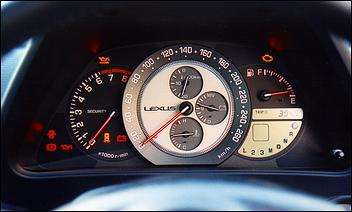
In fact, for someone after a luxurious, safe and compact car, the IS300 really delivers.
But we approached the IS300 with huge anticipation: if the car was as good as hoped, this writer was very seriously considering farewelling an LS400 and replacing it one day with an IS300. But for a driving nut, the IS300 is a disappointment - it feels like it's been designed with a foot in two very different camps.
In fact if this is a sports sedan, it's one that's pretty forgettable...
|
Lexus IS300 Fast Facts...
|
